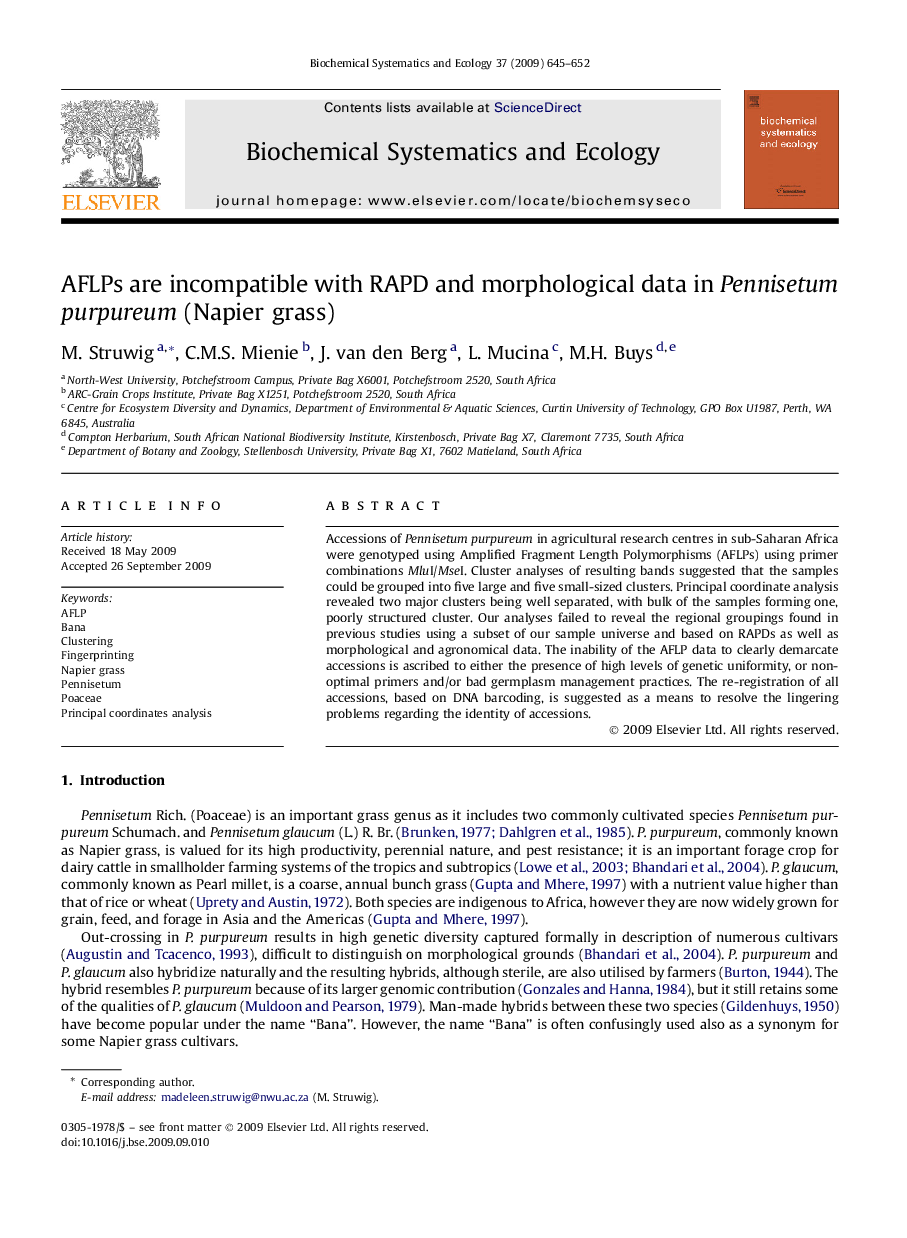| کد مقاله | کد نشریه | سال انتشار | مقاله انگلیسی | نسخه تمام متن |
|---|---|---|---|---|
| 1354560 | 980745 | 2009 | 8 صفحه PDF | دانلود رایگان |

Accessions of Pennisetum purpureum in agricultural research centres in sub-Saharan Africa were genotyped using Amplified Fragment Length Polymorphisms (AFLPs) using primer combinations MluI/MseI. Cluster analyses of resulting bands suggested that the samples could be grouped into five large and five small-sized clusters. Principal coordinate analysis revealed two major clusters being well separated, with bulk of the samples forming one, poorly structured cluster. Our analyses failed to reveal the regional groupings found in previous studies using a subset of our sample universe and based on RAPDs as well as morphological and agronomical data. The inability of the AFLP data to clearly demarcate accessions is ascribed to either the presence of high levels of genetic uniformity, or non-optimal primers and/or bad germplasm management practices. The re-registration of all accessions, based on DNA barcoding, is suggested as a means to resolve the lingering problems regarding the identity of accessions.
Journal: Biochemical Systematics and Ecology - Volume 37, Issue 5, November 2009, Pages 645–652